INTERNACIONAL
Lecciones de una larga guerra
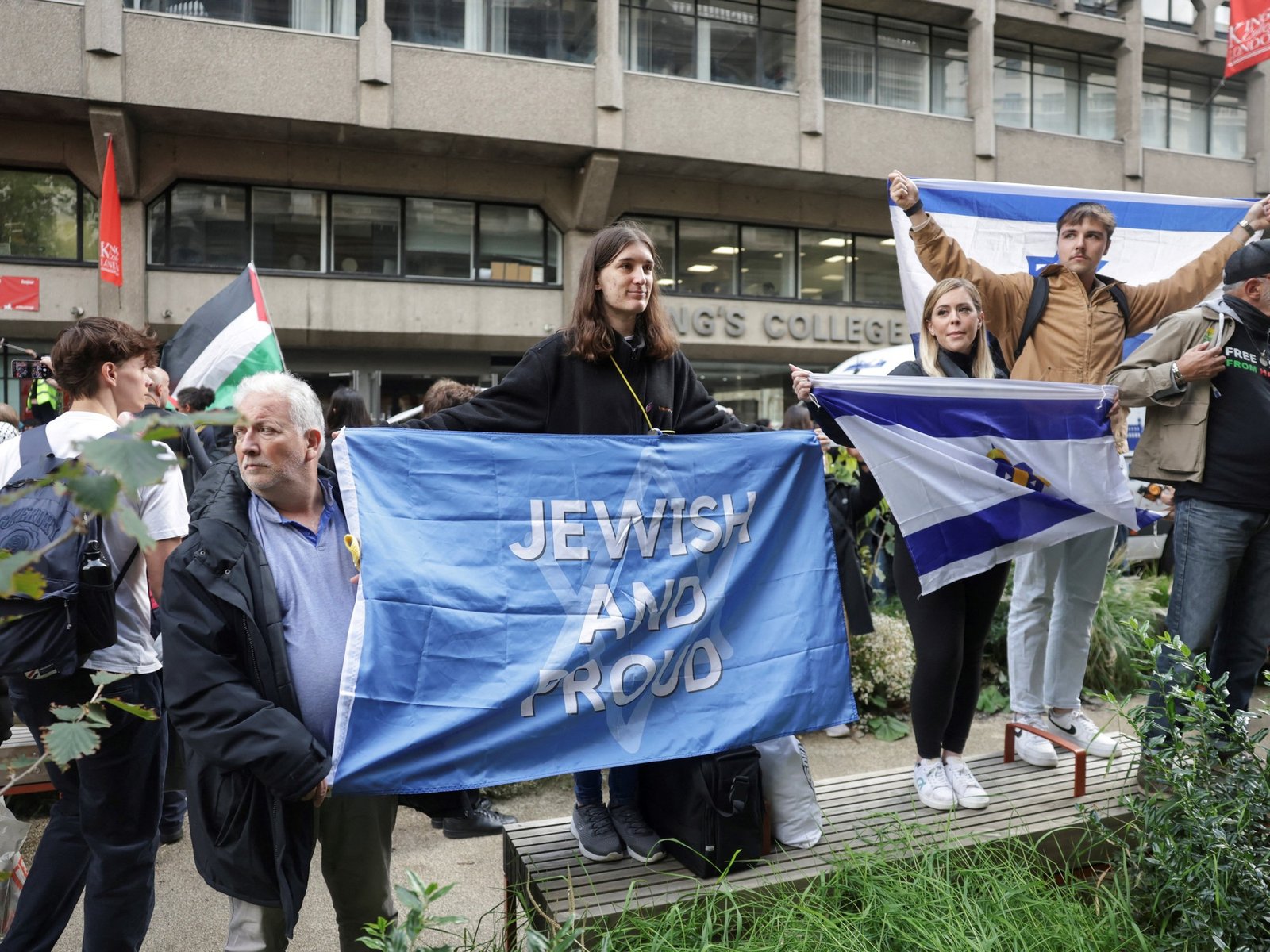
“ Cree en las personas cuando te dicen quiénes son”.
Una tecnología brillante nunca es un sustituto adecuado de una estrategia sólida.
«La debilidad es provocadora», dijo Donald Rumsfeld. También lo es la apariencia de debilidad.
Los israelíes son mejores que su gobierno.
No habrá un Estado palestino si Hamás u otros grupos militantes sobreviven como fuerza militar o política.
¿Quieres influir en las políticas de Israel? ¡Acéptalo!
A pesar de todos sus indudables horrores, esta guerra podrá ser recordada en última instancia como liberadora.
INTERNACIONAL
Body of final US hostage Itay Chen, held by Hamas terrorists, brought home after 2 years in captivity
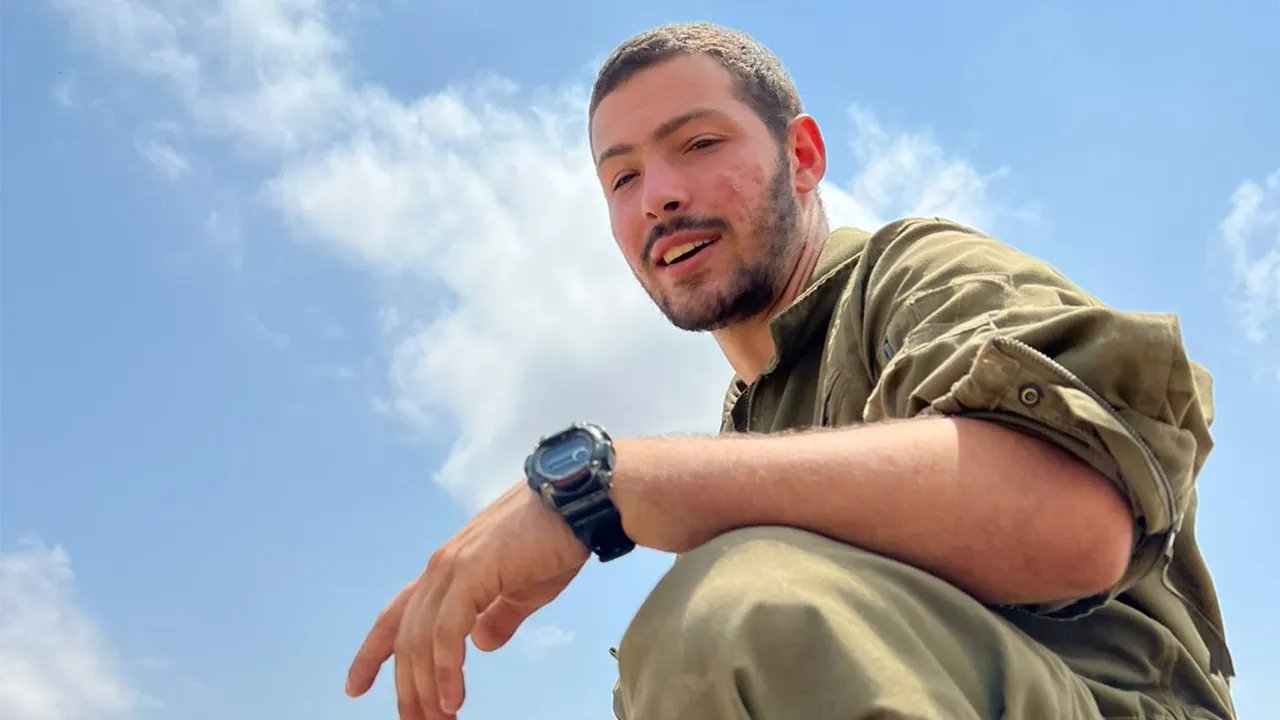
NEWYou can now listen to Fox News articles!
The body of the last U.S. citizen held by Hamas, Staff Sergeant Itay Chen, a 19-year-old dual U.S.–Israeli citizen, has been returned from Gaza for burial, the Israel Defense Forces confirmed Monday. Seven more hostages’ bodies remain in Gaza.
«Following the completion of the identification process by the National Institute of Forensic Medicine, in cooperation with the Israel Police and the Military Rabbinate, IDF representatives informed the family that Itay had been returned for burial,» the military said.
Chen served as a combat soldier in the 77th Battalion of the 7th Armored Brigade. He was killed on the morning of October 7, 2023, while fighting near Kibbutz Nahal Oz—one of the hardest-hit communities in Hamas’s brutal attack. Chen’s tank was struck during the battle, and his body was taken into Gaza. His death was officially confirmed on March 10, 2024.
BODY OF ISRAELI HOSTAGE WHO WAS HELD FOR NEARLY 700 DAYS IN GAZA IS RECOVERED
Ruby Chen’s son, IDF Sergeant Itay Chen was serving along the Gaza border when he was taken hostage by Hamas terrorists on Oct. 7. (IDF)
Itay was the middle of three brothers. He grew up in Netanya, a city in central Israel, studied in an advanced academic program, and was known for his warmth, humor, and dedication. He loved basketball, hiking, and rock climbing, and before joining the army worked as a camp counselor. Even after sustaining an injury at camp, he insisted on finishing the summer to set an example for the kids he led. Later he enlisted as an armored-corps soldier, driven by a deep sense of duty to protect others. He leaves behind his parents, Ruby and Hagit, and his brothers Roi and Alon.
Over the past year, his parents led an unrelenting campaign to bring their son home. They met with senior officials in Israel and Washington, including President Trump, advocating for the return of all hostages and the remains of the fallen.
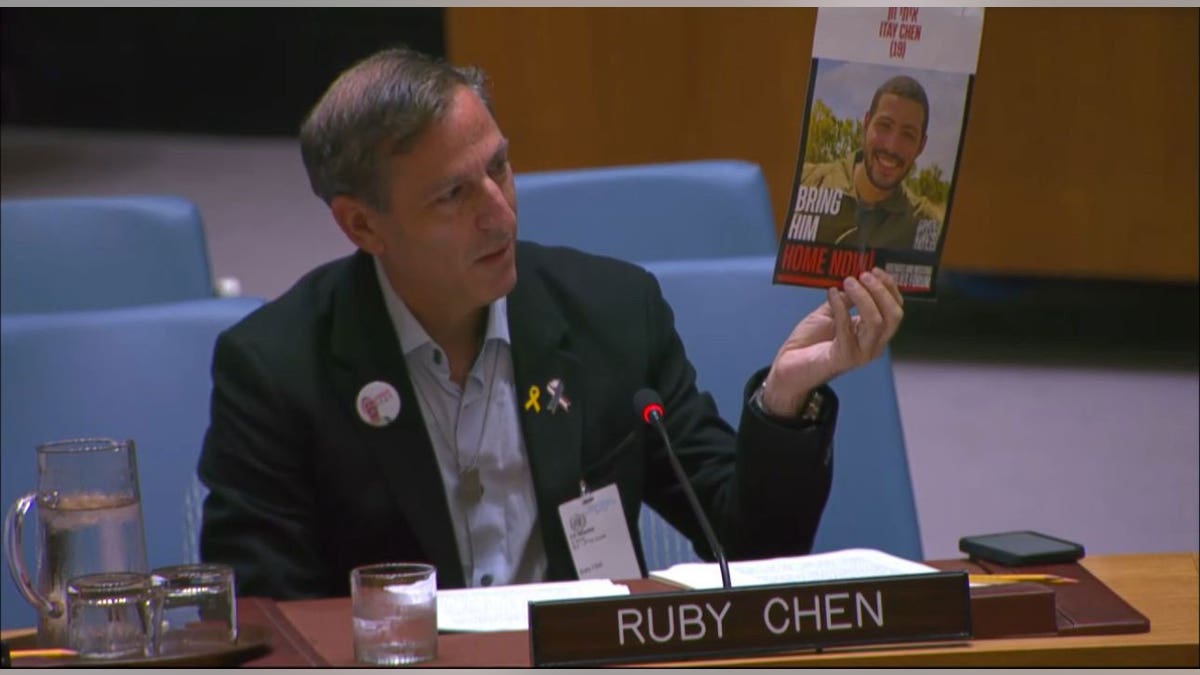
Ruby Chen addressed the U.N. Security Council, calling for more action to bring the hostages home from Gaza. Ruby’s son Itay is still being held in Gaza by Hamas terrorists. (Bianca Otero)
Ruby and Hagit Chen shared in a statement: «For 760 days, our dear and beloved son Itay, a hero of Israel, was held captive by Hamas. Last night, we received the bittersweet news of his return home to Israel. Even in this difficult moment, we remember that there are still seven hostages who must be brought back: Hadar Goldin, Ran Gvili, Meny Godard, Dror Or, Lior Rudaeff, Joshua Loitu Mollel and Sudthisak Rinthalak.»
Prime Minister Benjamin Netanyahu called the Chen family shortly after being notified of the identification. The prime minister offered his heartfelt condolences to the family, asked about the well-being of Roy and Alon, Itay’s brothers, and vowed to continue the fight without relenting until the last hostage is returned. The family thanked the Prime Minister for bringing Itay home for a proper burial in Israel.
Ruby Chen told Netanyahu that Itay’s sacrifice must not be in vain, and that there could be no return to the mindset of Oct. 6. He emphasized the need to establish a commission of inquiry, noting that the people of Israel deserve answers about what happened on that terrible day — answers for the 2,000 bereaved families and tens of thousands wounded in body and spirit.
President Trump’s special envoy for Peace Missions, Steve Witkoff, also called the Chen family for an extended conversation.
Witkoff expressed his admiration for how the family had conducted their campaign to bring Itay home, and underscored their pivotal role in highlighting the urgency of returning all remaining hostages. He added that the family helped President Trump grasp the critical importance of bringing home both the living and the deceased hostages and reinforced American determination and commitment to press forward until the last hostage is returned.
CLICK HERE TO DOWNLOAD THE FOX NEWS APP
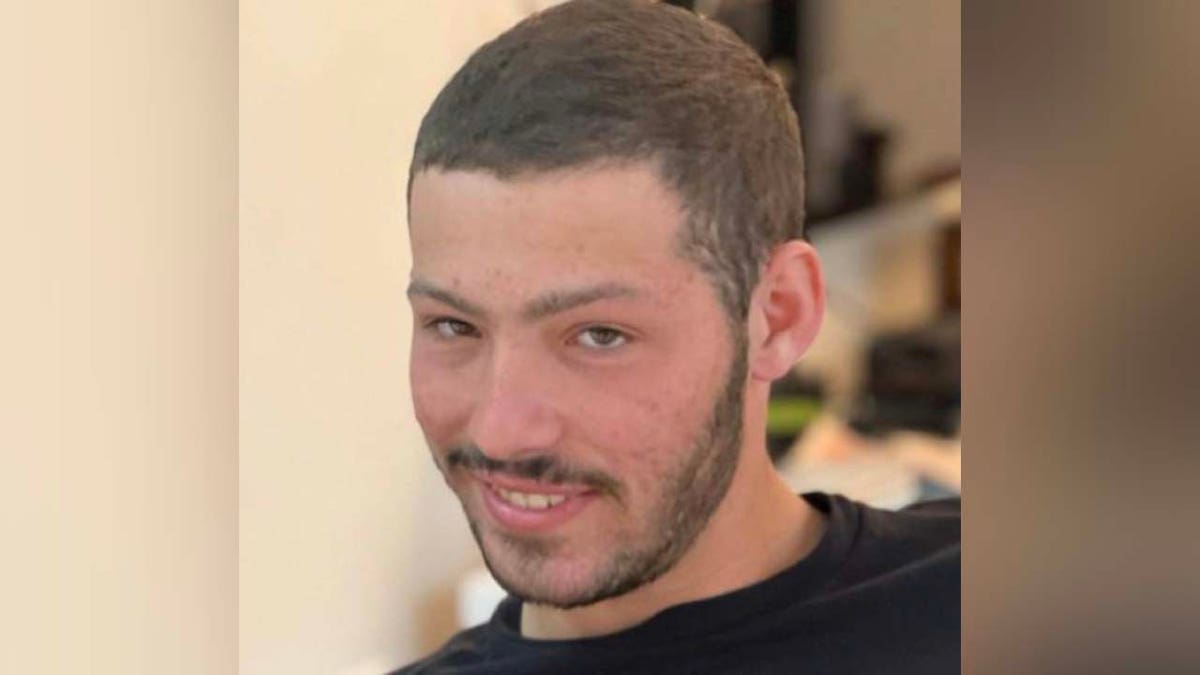
Itay Chen, 19-year-old U.S.-Israeli citizen, was on active duty in a tank unit on Oct. 7, 2023. (Hostage Family Forum)
The Hostages and Missing Families Forum said, «The return of Itay brings a measure of relief to a family that lived in agonizing uncertainty for more than two years. We will not rest until the last hostage is returned.»
Chen’s funeral will take place this week with full military honors.
israel,donald trump,hamas,terrorism
INTERNACIONAL
Hakeem Jeffries dodges question on whether Mamdani is future of Democratic Party
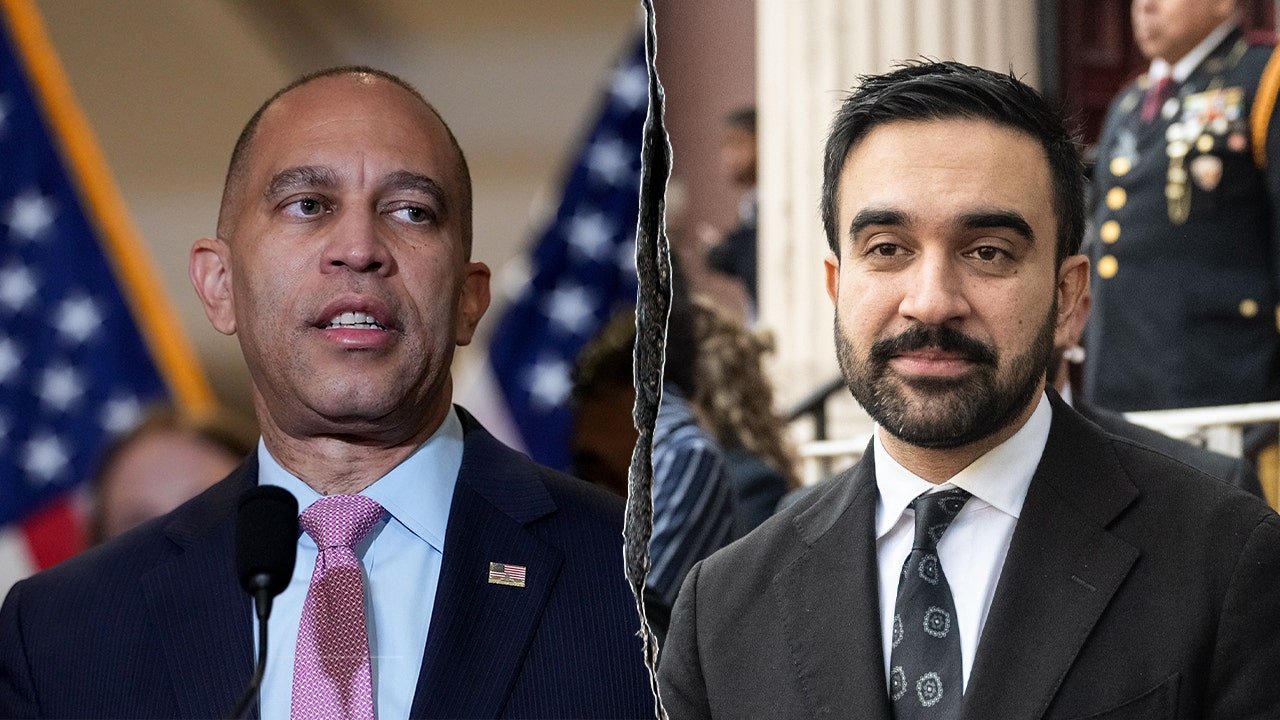
NEWYou can now listen to Fox News articles!
Following Zohran Mamdani’s decisive mayoral victory in New York City on Tuesday, House Minority Leader Hakeem Jeffries, D-N.Y., dodged a question on whether the self-proclaimed Democratic socialist is the future of the Democratic Party.
«You had record turnout in New York City for this election. Would you say that Mamdani is the future of the Democratic Party?» a reporter asked Jeffries during Wednesday’s press conference on Capitol Hill.
«Well, what Democrats have done all across the country is lean into the issue of affordability because of the fact that America’s too expensive costs are too high, and Donald Trump and Republicans, not only have they not done anything about it, they’ve made it worse as a result of the Trump tariffs as a result of them detonating the clean energy economy,» Jeffries responded.
«That’s why electricity bills are skyrocketing. And now, of course, they’re forcing these dramatically increased health care premiums to be visited upon the American people,» he added.
SOCIALIST SHOCKWAVE: ZOHRAN MAMDANI STUNS NYC AS VOTERS HAND POWER TO DEMOCRATS’ FAR-LEFT FLANK
Rep. Hakeem Jeffries, D-N.Y., and Mayor-elect Zohran Mamdani (Eric Lee/Bloomberg via Getty Images; Stephanie Keith/Getty Images)
Jeffries was also asked whether he is personally comfortable having the city he represents, the most populous city in America, be run by a socialist.
In response, Jeffries simply answered that Mamdani «is the mayor-elect of the City of New York,» saying, «It’s incumbent upon everyone to make sure that he’s successful.»
Although Mamdani was quickly endorsed by some of the country’s most progressive leaders, such as Sen. Bernie Sanders, I-Vt., and Rep. Alexandria Ocasio-Cortez, D-N.Y., the Democratic Party’s top leadership was slower to give their blessing. Jeffries himself did not answer whether he would be endorsing Mamdani until just before early voting began on Oct. 24. Senate Minority Leader Chuck Schumer, D-N.Y., never issued an endorsement of Mamdani. However, he called his electoral victory «historic.»
Mamdani, who is a 34-year-old immigrant from Uganda, is the first Muslim mayor of New York City.
WILL ELECTION DAY 2025 BE REMEMBERED AS THE RISE OF THE SOCIALISTS?
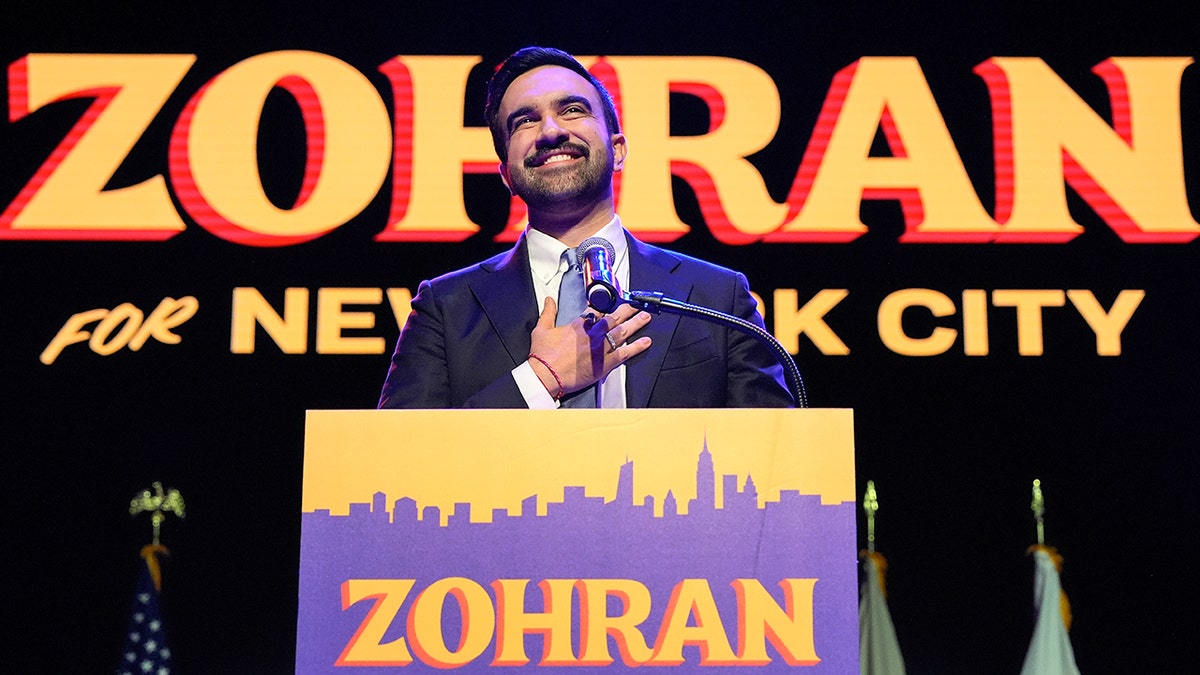
Zohran Mamdani delivers a victory speech at a mayoral election night watch party Tuesday, Nov. 4, 2025, in New York City. (Yuki Iwamura/AP)
Despite dodging these questions, Jeffries received an identical question earlier in the week about whether Mamdani is the future of the Democratic Party, prompting him to say, «I think the future of the Democratic Party is going to fall, as far as we‘re concerned, relative to the House Democratic Caucus and members who are doing a great work all across the country as it relates to our need to both take back control of the House.»
Jeffries called Tuesday night’s election a «big night for the American people» and a «big night for the Democratic Party.»
Besides New York City, Democrats also notched major victories in California, Virginia and New Jersey. He called the election results «a decisive repudiation of Donald Trump and failed Republican policies.»
This comes as the government shutdown over expiring Obamacare subsidies and healthcare benefits enters day 36, becoming the longest closure in U.S. history.
Senate Democrats have voted 14 times to reject a House-passed continuing resolution budget bill that would reopen the government.
Despite this, Jeffries indicated that he believes the Tuesday election showed the country is blaming President Donald Trump and Republicans for the shutdown and that more Democratic victories are in store in 2026.
VANCE DELIVERS POST-ELECTION REALITY CHECK, CONTENDS GOP MUST MAKE LIFE AFFORDABLE OR GET WALLOPED IN 2026
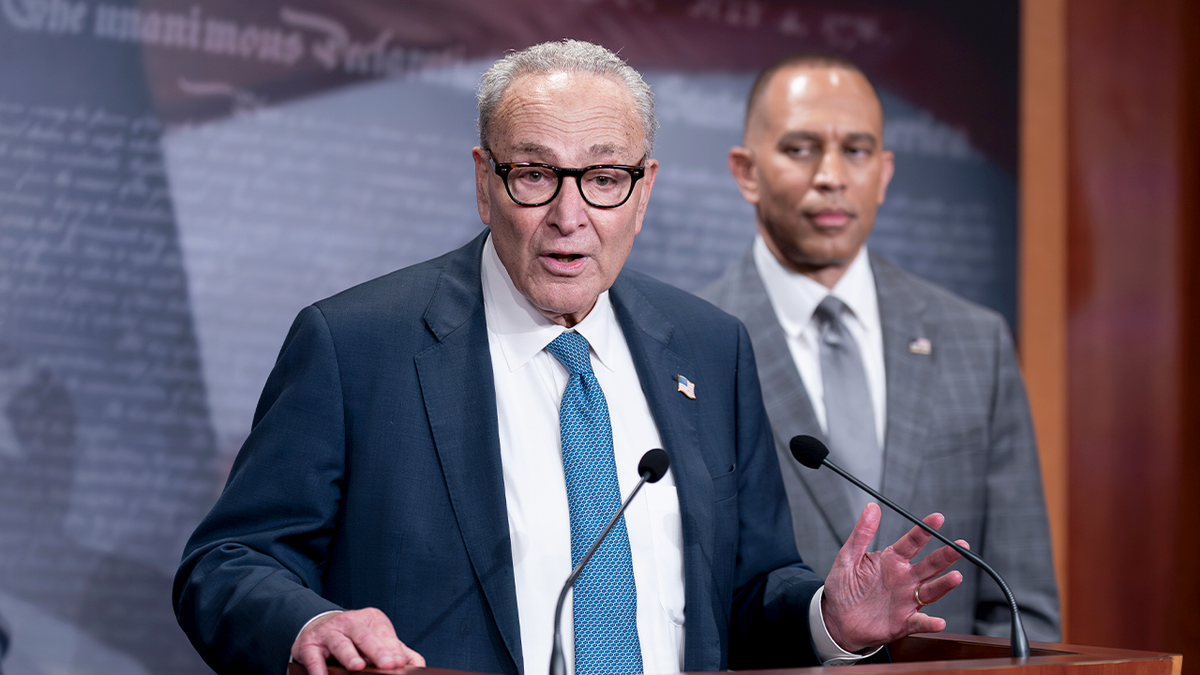
Senate Minority Leader Chuck Schumer, D-N.Y., and House Minority Leader Hakeem Jeffries, D-N.Y., right, update reporters after their meeting with President Donald Trump and Republican leaders in Washington Sept. 29, 2025. (J. Scott Applewhite/AP Photo)
«We’re going to take back control of the United States House of Representatives. So, let’s be very clear about that,» he said. «Based on the environment that we know exists, which, as Democrats, we’ve been telling you for the last several months, is the reality, but now it’s been confirmed by the American people.»
CLICK HERE TO DOWNLOAD THE FOX NEWS APP
He also praised the passage of a California redistricting proposition, which was backed by Gov. Gavin Newsom, saying it will further help Democrats retake the House.
«Stay tuned because more is coming,» he said. «Republicans are going to be unable to gerrymander their way into rigging the midterm elections. That scheme is over. Buried dead in the ground. And so, we’re going to take back control of the House and fight for every inch of territory.»
zohran mamdani,democratic party,socialism,government shutdown
INTERNACIONAL
Mamuts lanudos en lugares inesperados: por qué el hallazgo de un molar desafía el conocimiento previo

Luego de que se haya encontrado el diente de mamut en Long Island, Nunavut, registrado en 1878, modificó el conocimiento sobre la distribución de estos animales en el continente. En la actualidad, un equipo de investigadores de McGill University reclasificó el fósil, anteriormente atribuido a un mamut colombiano, identificándolo como perteneciente a un mamut lanudo (Mammuthus primigenius), según un estudio publicado en el Canadian Journal of Earth Sciences.
Este diente representa el registro más nororiental de la especie en América del Norte y amplía considerablemente el rango geográfico previamente conocido de los mamuts lanudos. El fósil, hallado cerca de donde confluyen las bahías de Hudson y James, fue descrito por Robert Bell, entonces director del Geological Survey of Canada.
La identificación actual se basa en un análisis morfológico detallado, que determinó que se trata del tercer molar superior izquierdo de un mamut lanudo, adaptado a climas fríos y no al clima templado asociados al mamut colombiano, como se había estimado inicialmente.

El trabajo dirigido por Louis-Philippe Bateman, con la colaboración de Hans Larsson, combinó varias técnicas modernas para confirmar la especie. De acuerdo con el Canadian Journal of Earth Sciences, los investigadores examinaron la forma y el desgaste dental, realizaron dataciones radiocarbónicas y analizaron isótopos estables de oxígeno, nitrógeno y carbono.
El estudio incluyó el muestreo de esmalte y colágeno, en una práctica que Bateman describió como “odontología de alto riesgo en restos fósiles valiosos”, según explicó a McGill University. El análisis isotópico permitió estimar la antigüedad y las condiciones ambientales vividas por el animal. El diente mostró una edad radiocarbónica calibrada superior a 39.800 años.
Sin embargo, datos geológicos y paleoclimáticos indican que el mamut existió probablemente entre hace 130.000 y 100.000 años, durante el periodo interglacial MIS 5e. Los isótopos de oxígeno presentes en el esmalte sugieren que la temperatura media anual del área rondaba los 2,1 ℃ (35,8 ℉), comparable al clima actual de Long Island durante los periodos más cálidos.

El análisis del colágeno del diente mostró que el mamut se alimentaba sobre todo de plantas propias de la tundra, como gramíneas y otras especies adaptadas al frío. Este tipo de dieta es característica de los ambientes glaciares. Además, los valores elevados de nitrógeno encontrados indican que el animal atravesó un periodo de escasez de alimento, lo que llevó a que su organismo utilizara reservas internas para mantenerse con vida. Según el equipo de McGill University, estos datos reflejan que el mamut experimentó estrés nutricional poco antes de morir.
La corrección en la clasificación del fósil, junto con la información obtenida, no solo permite ampliar el mapa de la distribución de los mamuts lanudos, sino que también resalta el papel fundamental de las colecciones de museos en la ciencia.
El espécimen, conservado durante casi 150 años en el Canadian Museum of Nature, ha permitido revelar detalles sobre la adaptación y la supervivencia de especies extintas frente a variaciones climáticas. Bateman destacó que aún queda mucho por investigar en el este de Canadá y que la confirmación de la presencia de mamuts lanudos en la zona incentiva la búsqueda de nuevos fósiles en ubicaciones poco habituales.
Este caso demuestra que los restos conservados en museos pueden ofrecer información científica significativa incluso después de más de un siglo. Los estudios sobre fósiles históricos facilitan la comprensión de la evolución y la respuesta de los organismos ante los cambios medioambientales a lo largo del tiempo, y advierten sobre la importancia de preservar y analizar las colecciones científicas para futuros descubrimientos.
2007,2007 fossil project,2007 july,arctic,canada,canadian museum of nature,carnivore (\bacon\) site,devon island,fieldwork,haughton formation,haughton impact crater,natalia rybczynski,nunavut,paleo,paleontology,puijila,west rhinoceros creek,© martin lipman 2007

 POLITICA2 días ago
POLITICA2 días agoKicillof quiere declarar en emergencia económica a la provincia y pide autorización para tomar más deuda

 CHIMENTOS3 días ago
CHIMENTOS3 días agoLaura Ubfal confirmó quién amenazó de muerte a Juanita Tinelli: «Es un conocido de…»

 POLITICA2 días ago
POLITICA2 días agoDel Presupuesto al diálogo con los gobernadores: los desafíos y negociaciones que enfrenta el nuevo Gabinete















